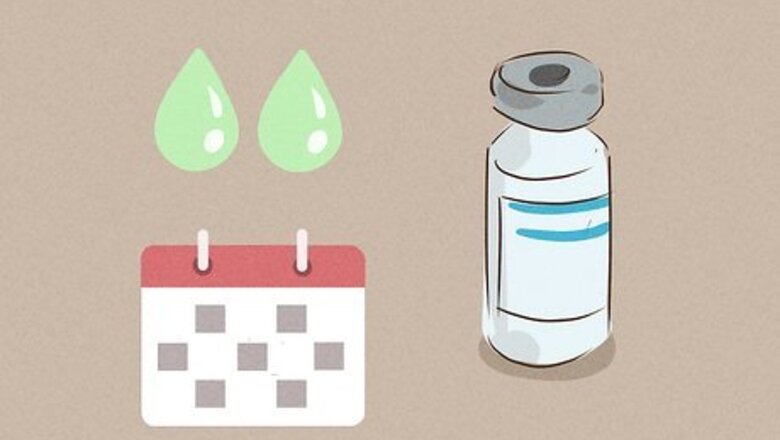
views
X
Expert Source
Joel Warsh, MDBoard Certified Pediatrician
Expert Interview. 20 July 2021.
You can do it yourself at home with no problem, as long as you follow the right instructions.
Syringe and Site Prep
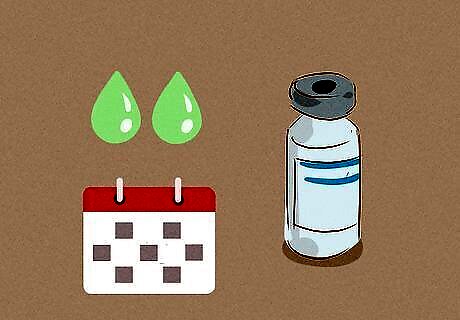
Confirm the dosage and date of the medication. Make sure the vial contains the correct medication type and double check the dosage you’re supposed to give. Also confirm that the medication isn’t expired before filling the syringe. Checking the medication type is especially important if your baby takes a few different medications. Never inject medication that’s out of date. Contact your doctor for a fresh prescription.

Use a 16-22 mm, 22-25 gauge needle. This is the recommended needle size for a newborn. Your doctor probably gave you the correct needle type when they prescribed the medication, but double check to confirm that you’re using the right size. The only exception is for premature infants, who need a 16 mm needle.
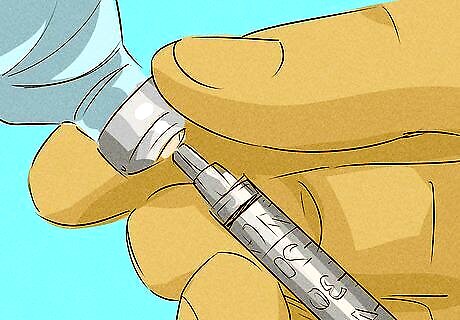
Fill the syringe with the medication. First clean the top of the medication bottle with an alcohol swab to kill any germs. Remove the syringe cap and pull the plunger back to let air in. Push the needle through the top of the bottle at a 90-degree angle and press the plunger forward. Flip the syringe and bottle upside down and pull the plunger back to fill it with the proper dose of medication, then pull the syringe out. If there are air bubbles in the syringe, point the needle up and tap the side to bring the bubbles to the top. Then press the plunger forward a bit to push the air out. Some syringes come pre-filled with medication. In this case, you don’t have to fill it yourself. Always follow the instructions on the medication bottle for filling the syringe if they’re different.

Wash the outside of your baby’s thigh with soap and water. The outer thigh, on either leg, is the recommended site for IM injections. Use plain soap and water to wash the spot. Then dry it off completely before giving the injection. You could also use an alcohol swab to disinfect the spot. Just make sure the alcohol dries before you give the injection. This spot is technically called the anterolateral thigh, so you might see that term on some instruction lists.
Injecting
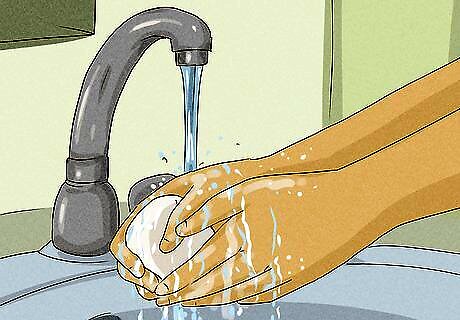
Wash your hands before starting. Your baby could get an infection if you give them a shot without washing your hands first. Carefully wash your hands with soap and warm water, and be sure to scrub your palms, the backs of your hands, in between your fingers, and your fingernails. You don't have to wear gloves when you give the injection, but you could if you'd like an extra layer of protection.
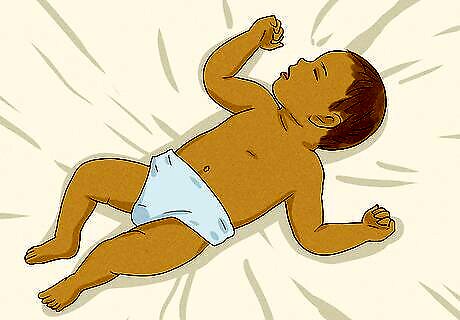
Place your baby on their back. Make sure they’re in a comfortable position. Try to position their legs so the muscles are relaxed, which will make the shot hurt much less. You could give your baby a toy or book to distract them during the shot. This can help keep them calm and prevent them from feeling too much pain. Having someone else there to play with or talk to your baby will also help distract them.

Lay your forearm across your baby’s pelvis. Apply some very light pressure to keep them in place. This helps prevent them from squirming during the injection. Don’t press down hard. Just apply enough pressure to keep your baby still. If you have someone there to help you, they can keep the baby still instead. This makes your job easier.
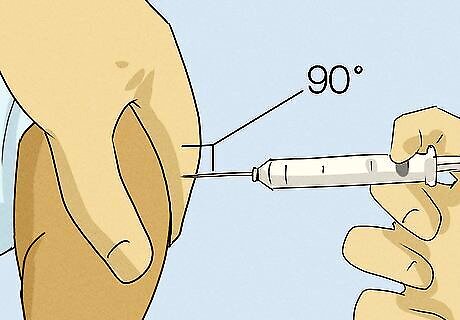
Hold the needle at a 90-degree angle from your baby’s outer thigh. Pinch the syringe between your thumb and index finger, like a dart. Point it straight at the injection site on your baby’s upper thigh. The ideal injection site is just about halfway between the hip and knee. This is where the muscle is thickest, so aim for this spot.
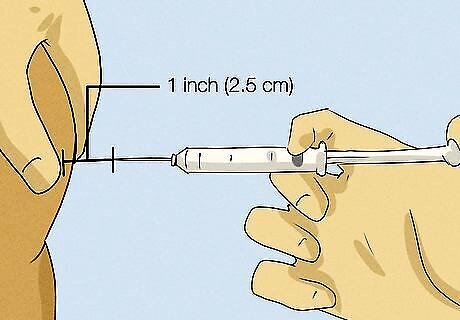
Press your thumb about 1 in (2.5 cm) away from the injection spot. Continue holding in this spot while you give the injection. This thins out the skin and makes the injection easier. It also helps keep all the medication under the skin. Don’t squeeze the skin. This makes the spot thicker and will make the shot more difficult.
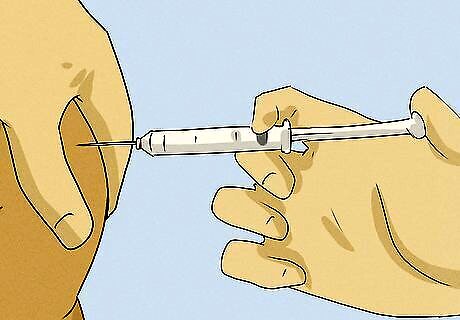
Insert the needle quickly while maintaining the 90-degree angle. Push the needle directly into the skin as far as it will go. Keep the syringe straight so it maintains a 90-degree angle as it’s going in. Doing this faster will make the shot hurt less, so try to be quick. As long as the needle is the right length, you don’t have to worry about going in too far.

Inject all the medication slowly. Once the needle is all the way in, press the plunger on the syringe all the way down slowly. This injects the medication at a comfortable speed that shouldn’t be too uncomfortable for your baby. Don’t pull back on the plunger before pressing it. This is only needed if there are big blood vessels at the in the area, and there aren't any in the outer thigh.
Finishing Up
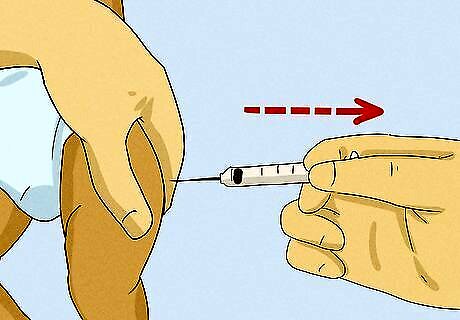
Remove the needle slowly. Make sure all the medication is injected, then slowly pull the needle back. When the needle is all the way out, release your thumb from your baby’s skin.
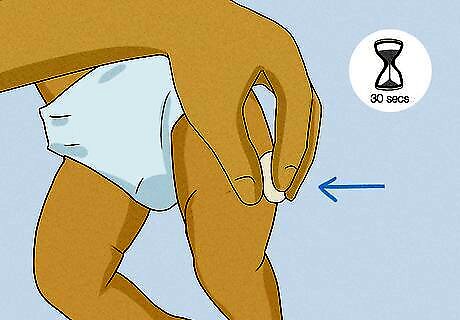
Hold a cotton swab on the spot for 30 seconds if there’s any bleeding. A bit of blood after an injection is normal. Apply light pressure to stop the bleeding. Don’t rub the spot or you could cause a bruise. If the spot keeps bleeding, put a bandage over the cotton ball to keep it on.
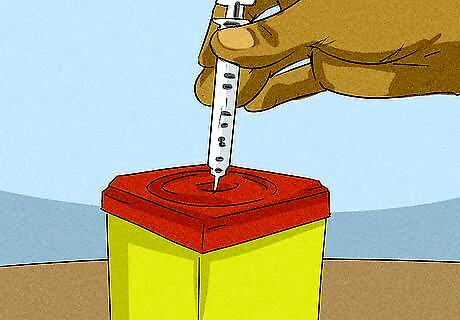
Get rid of the syringe in a plastic container. This prevents the needle from accidentally poking anyone. A specific Sharps needle container is best, since these are all carefully marked and designed to keep needles contained. If you don't have a Sharps container, then any sealable plastic container or bottle, like for laundry detergent, will work. Write “Used needles” on the container when you throw it out so trash collectors are careful when they handle it. Never throw the syringe into the regular garbage with putting it in a container first. You should check if your local trash collection services have any special rules on getting rid of syringes. They might want you to use a special container.
















Comments
0 comment